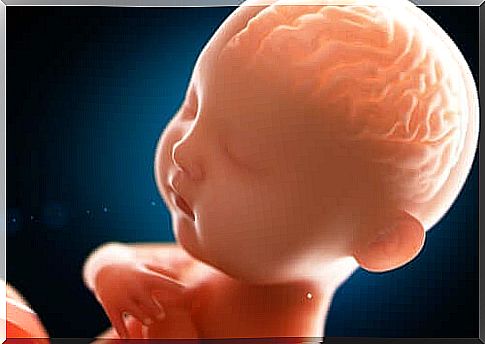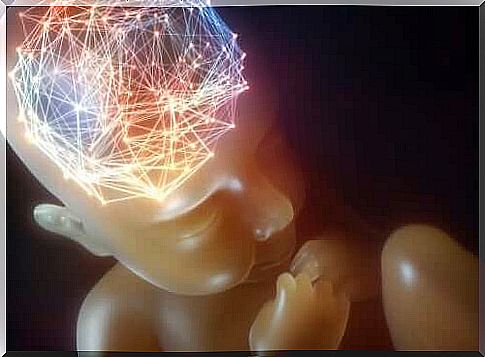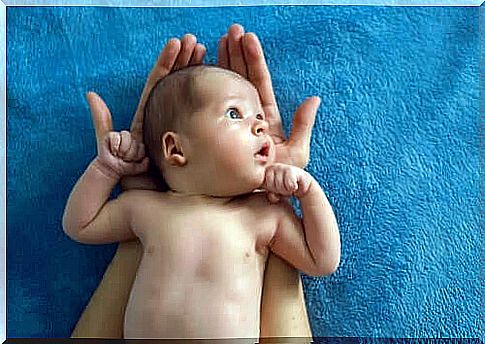An Infant’s Mind – What’s Going On Inside?

The mind has been described in many different ways throughout history. Nowadays, we know more about it thanks to technological advances that have allowed new scientific research. As soon as we get to the subject, have you ever wondered what an infant’s mind is like? Is it the same as in an adult? What about an older child? Surprisingly, this is a rather fascinating subject that researchers began to study quite recently.
Different authors throughout history actually believed that infants were only miniature adults and not qualitatively different. In fact, if you flip through the story, you will find some “fun” ideas. For example, Descartes believed that babies were trapped in the present, while William James claimed that their world was just a “buzzing confusion. “
Over time and according to many philosophical, psychological and biological theories, our knowledge and reflection have become increasingly accurate and profound. In this article, we will therefore try to better understand how an infant’s mind works. We will also take a look at why and how it differs from an adult’s mind.
An infant’s mind according to neuroscience

Current neuroscience has ways of emphasizing or excluding hypotheses from the past. We know that infants are able to process information in a short time through techniques that measure brain activity. Thus, they have the power to capture different sensations and give them a specific meaning.
It is precisely in this way that babies can detect unusual stimuli even if they do not focus on anything in particular. This is a fantastic and necessary faculty for learning. In addition, the absence of prejudice means that we have a greater creative potential to attribute it to.
In fact, we know that a baby ‘s brain has many more neurons than an adult’s brain. A process called neuronal pruning occurs as we evolve, eliminating compounds and neurons that are not useful to us.
After analyzing the connections in the areas of the cerebral cortex of an infant, the researchers found that these have better connections than an adult brain – especially in areas dedicated to executive functions. This is quite fascinating, as it can be just one of the phenomena that are responsible for people being able to learn so much in the early stages of life. If this is true, the internal “cables” in our brains would be a facilitating element.
Similarly, neurotransmitters are also important in infants’ brains, just as they are in the adult brain. In connection with this, their peculiar release would make infants less selective by filtering stimuli.
Myths about infants’ minds
David Chamberlain, a California psychologist, spent much of his life studying infants’ minds. In fact, his book, The Mind of Your Newborn Baby , underscores the most prominent myths associated with just this. Here are some of them:
- Infants do not feel . It may seem obvious that they are actually doing it, but a few years ago some people still thought they were not doing it. In fact , some felt that it was not necessary to use anesthesia on babies. The truth is, however, that they feel, and this is thanks to the central nervous system, among other elements.
- The brains of babies are underdeveloped. Thanks to research, we know this is not the case. In fact, their brains have more nerve cells than most adult brains.
- They are not able to think . Of course, babies think, even if they do it differently than children and adults.
- A newborn does not need his mother . They need her because she is the person they are connected to: not just as a reference, but as a source of love.
Perinatal psychology showed us the importance of infant conditions for their future development. At the same time , behavorism focuses on how habituation and sensitization work. Precisely because of this, thanks to these and other approaches, we now know that an infant has many functions that in the past were thought not to exist.
The development of an infant’s mind

Babies change as they grow. We appreciate some changes, while not noticing others because they are either subtle or internal.
For example, a child younger than two years old learns to manipulate objects through his senses. In addition, they may begin to crawl, have more access to language, and begin to develop connections. Precisely because of this, their minds will not be the same as with a three-year-old. Why is it like that? Well, it happens that infants’ brains continue to change as they interact with the environment. Thus, they make new connections and reject those that are not effective. They do this according to their stage of development.
Furthermore, it is the monthly changes in the brain. Usually this depends on each child’s biological factors and their degree of interaction with the environment. Thus, each milestone works towards the baby’s development. According to Ana María Caballero, author of the book Teachers Learn How Kids Experience the Arboretum , for example , crawling favors the integration of the corpus callosum, a structure that unites both halves of the brain. As a consequence, they develop a crossed pattern, a vestibular and proprioceptive system, visual convergence and eye focus, the feeling of touch, future lateralization and the ability to write in the future.
In short, an infant’s mind is truly fascinating because it creates connections after each learning experience. One needs the other to strengthen optimal development, and given that they still lack prejudice, they still have the amazing creative capacity. There are still many questions to answer and many questions we have not even formulated yet.








